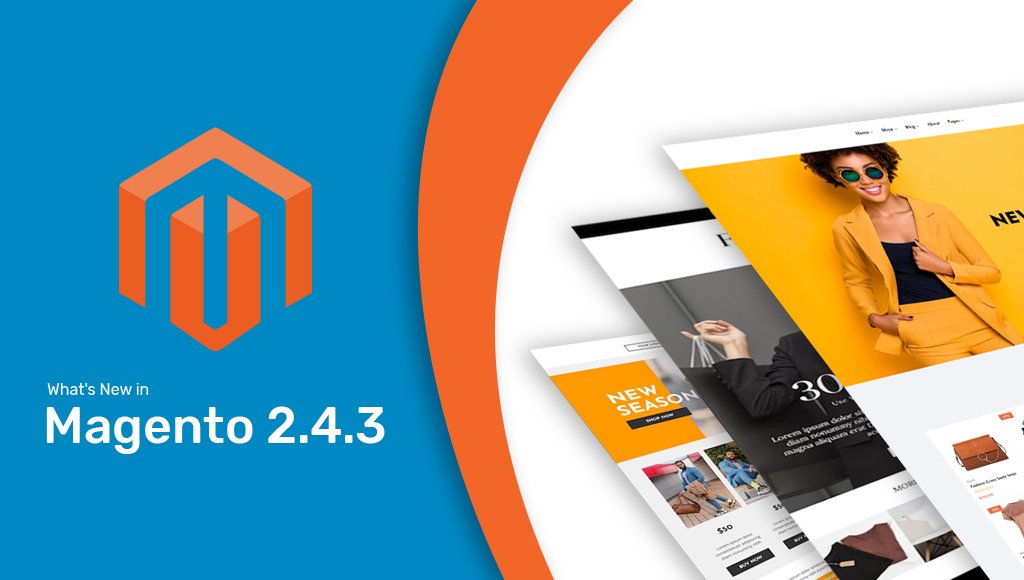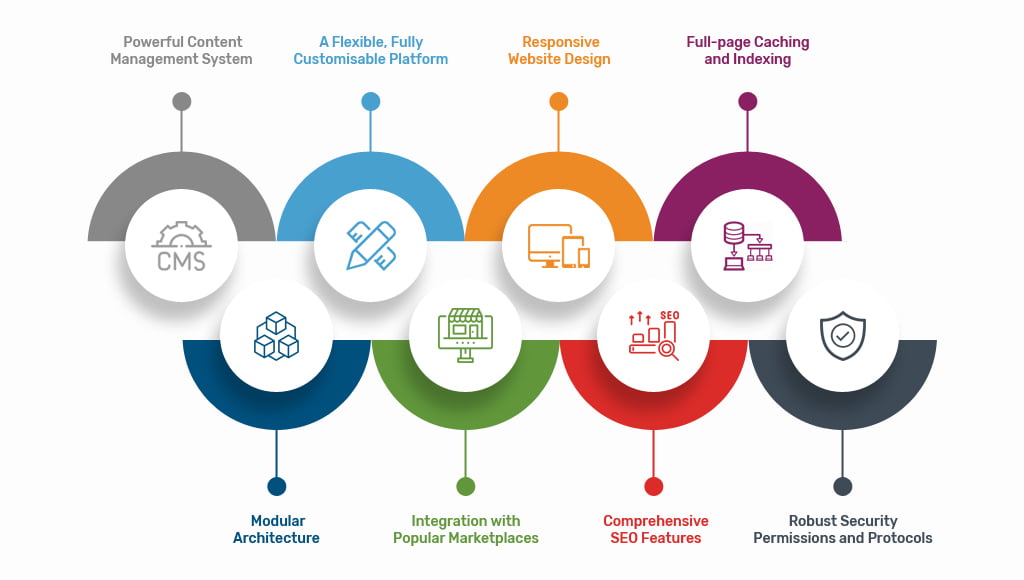
Magento is an eCommerce platform that powers 0.6% of the entire Internet. It is available in two main forms: Magento Open Source and Adobe Commerce. One has free, open-source code, while the other is an enterprise solution that builds beyond the first's out-of-the-box functionality.
Varien released Magento last 31st March 2008. Then, in 2018, Adobe acquired Magento for $1.68 billion. After this acquisition, Adobe renamed Magento to Adobe Commerce. However, most people still refer to the technology as Magento and to minimise confusion, we will do the same in this article.
Since its first release, Magento has been downloaded almost 5,000 times daily. It is the platform that powers some of the most notable brands in the world -- including Ford, Nestle Nespresso, Landrover, and Sigma Beauty. And there are many reasons for its popularity. Magento is well-loved because it offers the following:

Magento has been released in two versions: Magento 1 and Magento 2. In the next section, we'll discuss the difference between the two and how it has changed from version to version.
When Magento 1 was released [31 March 2008], it made quite a lot of fuss. It attracted immediate attention from the eCommerce community because it was a platform that promised a lot of customisability. In fact, less than a year after it was released, its creators were already giving talks in Europe.
But it wasn't perfect -- and that's what Magento 2 aimed to address. Released last 17th November 2015, Magento is very different from Magento 1. Some of the most important differences and enhancements are covered below.
Magento 2 offers an enhanced architecture that uses PHP7 and HTML5 for more customisation and optimisation. It also comes with bundled JavaScript and advanced browser caching, eliminating unnecessary browser operations. And it supports both Zend Framework 1 and 2, as well as MySQL Percona 5.6 and higher.
There are also new technologies in Magento 2's architecture that weren't available in Magento 1, including:
Sites on Magento 1 typically have an average load speed of more than two seconds. And according to Google, websites should load no longer than 2 seconds.
With Magento 2, home and product pages have 50% faster loading speeds. In addition, 39% more orders can be processed per hour, with 66% faster add-to-cart server responses. And end-to-end checkout is 51% faster compared to Magento 1.
Speaking of checkouts, Magento 1 subjected users to a six-step checkout process:
This was lengthy and rather unnecessary, and it was a common bone of contention among many who used Magento 1.
With Magento 2, the entire checkout process has been reduced to just two steps: shipping and payment review.
Before, users had to integrate payment gateways into their Magento 1 site. This required third-party plugins and quite a lot of resources. But with Magento 2, multiple payment gateways now have automatic support. These include popular platforms like PayPal and Authorize.net.
Magento 1's admin panel was hard to navigate. In Magento 2, this has improved but not by much. It still comes with a rather steep learning curve.
Among the biggest complaints about Magento 1 was the conflict between third-party extensions. Now, it's easier to install extensions. But they're still difficult to customise.
Magento 2 is better than Magento 1 at search engine optimisation. Some new SEO features that are now available include:
Since Magento 2 was launched, it has undergone several iterations. These are:
Its new version, Magento 2.4.3, was launched last 10th August 2021. It carries:
Version 2.4.3 offer heaps of security, performance, and platform upgrades.
Magento 2.4.3 fixes some common cross-site scripting and remote code execution vulnerabilities for site security. In addition, it:
The new release offers a lot of improvements that can affect site performance:
Magento 2.4.3 also upgrades Core Composer dependencies and third-party libraries to be compatible with PHP 8.x.
Despite the upgrades that come with Magento 2, there are still quite a lot of people who resist the idea of adopting the new version. There are many reasons for this.
One, people don't want to have to face change. Two, the process can be cumbersome and costly, as moving to Magento 2 requires creating a whole new website. And three, they're already satisfied with their Magento 1 site.
Moving to Magento 2, though, is not only recommended -- it's also critical. First, support for Magento 1 was supposed to end in 2018, but the slow progression from Magento 1 to Magento 2 forced them to extend the End of Life date. But finally, it ended on 30th June 2020.
Because of this, sites running on Magento 1 will no longer receive security patches. As a result, your site might be at risk of DDoS attacks, running spam registrations, or brute force penetration attacks. In other words, your website will not be protected against any new vulnerabilities discovered in the software, which puts your business and your consumer at risk. Additionally, not having security patches means you might have to pay fines for not complying with PCI security standards.
Sticking with Magento 1 also prevents you from harnessing the new and powerful functionalities of Magento 2. This will not only affect your site, but it will also impact how your customers experience your site. Providing your clients with the best user experience is crucial for staying competitive and ahead of the curve. So, moving to Magento 2 is not optional but rather crucial.
Magento 2 helps prepare your website to be future-ready. When migrating, make sure you partner with the right Magento solutions provider. At iVersion, we leverage years of experience in the industry and couple it with personalised customer service to deliver successful results.
Talk to us about adopting Magento 2.4.3 today.
Get the Right People to Manage your IT
Sign Up and Stay Informed